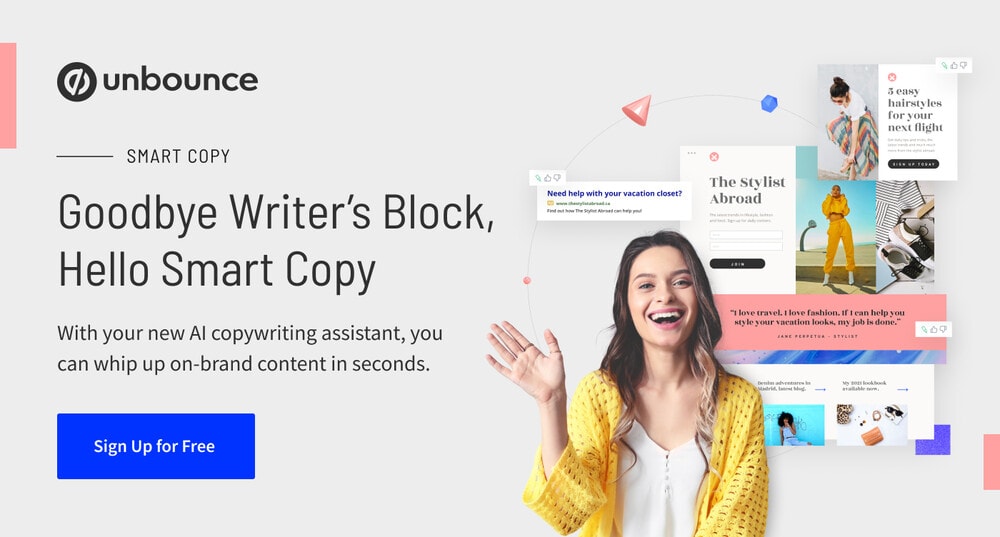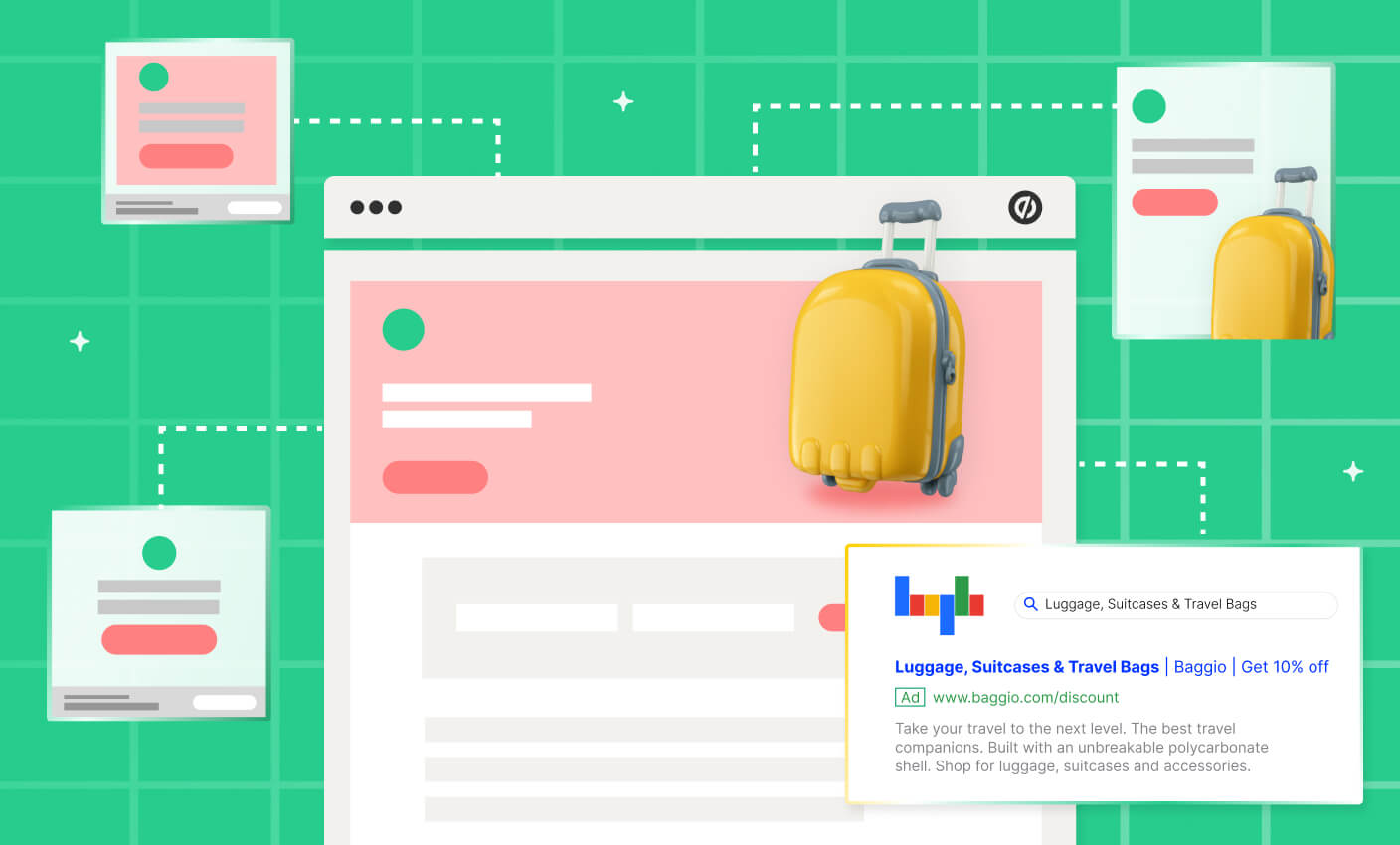Crafting strong Google Ads copy for PPC (pay-per-click) isn’t hard—but to do it right, you’ve gotta combine art and science. You only have a small number of characters on search engine results pages (SERPs), so you need to make ’em count.
When writing copy for ads on Google, it’s important to think about the experience your visitor is having—from query, to ad copy, to landing page.
If there’s a hiccup along the way or they feel like they might be going down the wrong path, they’ll hit the back button. Worse, they might conduct another search and find another company ready to meet their needs. Additionally, as much as we would like it to, no ad can convert a prospect without a strong accompanying landing page.
“Whoa, slow down Unbounce. How exactly do I get started on Google Ads?” No sweat—check out our guide to Google Ads basics and learn how to launch your first campaign.
What is Google Ads copy?
Google Ads is Google’s (aptly named) online advertising platform. It’s responsible for a bunch of the ads you see online—at the top of your Google search results, on Google Maps, and across lots of the websites you visit through display advertising. Google Ads operates on a PPC model, where you pay ’em a bit of money every time somebody clicks on your ad.
There are lots of benefits to advertising on Google. The search giant has more than 90% market share and is the most popular engine by a country mile—so you know your ads are gonna get eyeballs. Google Ads also lets you get super targeted with your advertising. You can choose to show your ads to people based on their demographics (age, gender), their search history, and even how they’ve interacted with your brand in the past.
But getting your ads in front of people is one thing—getting ’em to click is another. That’s why you need persuasive, eye-catching Google Ads copy.
How to write Google Ads copy (that actually works)
There are different types of Google Ads (search, display), but you’ll almost always need copy for these components:
- Headline. Your headline is the most critical part of your ad text since people will likely read it before anything else. Some Google Ads have just one headline, while others might have two or three. A good strategy is to include words your target audience likely used in their Google search. And—as always—make sure you’re communicating your unique value proposition.













![[Build – MOFU] PPC Use Case Page – V1](https://unbounce.com/photos/LookBook-Blog-Visual-CTA_2.jpg)










